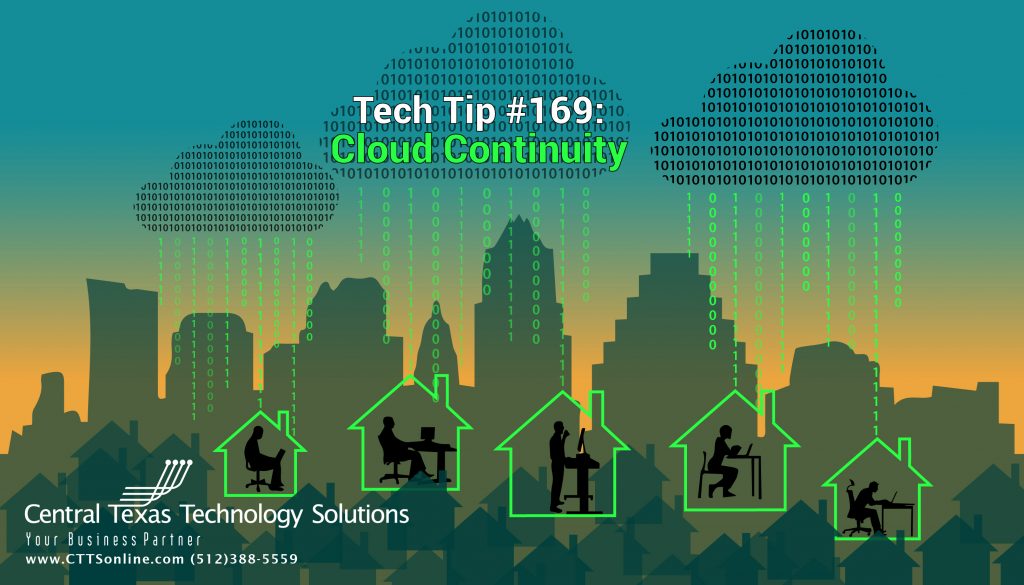 Can You Afford to Keep Your Servers?
Can You Afford to Keep Your Servers?
For decades now, on-premise servers and systems have been king. It has only been the last 10 years where Cloud services and infrastructure have become mainstream. Sometimes it has been a rocky road to move on-premise systems to the Cloud, but recent events have shown the chinks in the on-premise infrastructure armor.
Paradigm Shift
The recent COVID-19 outbreak has been a game-changer. Until now, many businesses have been able to sail along with their on-premise systems, confident that they can continue business as usual. That has gone out the window. And while things may get back to normal in time, the rise of this coronavirus has been an exercise in the importance of business continuity. Continuity is usually spoken of in the context of running on-premise systems virtually while repairing/restoring these systems due to some sort of failure. But true continuity is being to able to operate regardless of the situation. When your technology infrastructure is tied to the four walls of your office, what happens when you can no longer use it? Ordinarily, your downtime is minimal while things are being restored but what about when you can’t use your office for days or weeks or even months?
Weathering the Storm
Cybersecurity has been a hot topic in IT for the last few years. There is a good possibility that this will be eclipsed by Cloud shortly. For those companies who took the plunge and moved to the Cloud before the beginning of 2020, COVID-19 has been a speedbump. It has caused some changes in policy and process but not many issues in the way of productivity and getting work done. For those that are tied to on-premise infrastructure, it has been anything from a massive pothole to a tree down across the road. These companies have scrambled with their own IT or providers to try and fill those potholes and chop those trees up as fast as possible so they can get the car moving on down the road. Only time will tell on how this has affected business revenue and employment. While this outbreak is the exception and not the rule, it certainly has shown how on-premise infrastructure can be a liability. Is it still worth the risk? Do we still need to keep all these things on-premise?
The New Normal
I remember the early days of Cloud-hosted email. Everybody and their brother had on-premise email servers and the notion of moving that to the Cloud was insanity. How can that be trusted and controlled? What happens if the Cloud provider goes down and we can’t access our email? There was a litany of concerns and objections some of which were justified in the early days. Fast forward to the present. Now, everybody and their brother has a Cloud-hosted email. Finding a company with an on-premise email server is like an archaeologist finding a rare fossil at a dig site. Cloud-hosted email is secure, highly available, highly accessible and easy to manage. These providers have data centers that are distributed, replicating data between them, on multiple power grids with redundant systems and full premise security. That is something that can’t be claimed by an on-premise email server. In this day and age, on-premise email systems are a business liability rather than an asset. But what about other systems? What about application servers, database systems, directory services?
Cloud to the Rescue
Today, we hear some of the same concerns and objections about the Cloud in these areas as we did with email servers. But Cloud hosting has come a long way. Directory services are solidly Cloud-based now with solutions like Microsoft Azure Active Directory, Google Directory, JumpCloud and others. Server hosting is just as secure and reliable as email with Microsoft Azure, Amazon Web Services and many additional providers. Many application vendors are coming out with hosted versions of their software, turning them into Cloud services. Full infrastructures can live in the Cloud now including virtual desktops so that your local computer just becomes a device that you use to connect to your virtual infrastructure. These services are subscription based making them easier to budget for rather than having to handle large capital purchases every few years as well as the overhead of upgrading all these systems. These services, like email, are also highly available and accessible. There really isn’t much that can’t be done in the Cloud these days. Now, it isn’t just on-premise email servers that are a business liability, but any on-premise server infrastructure is rapidly joining that category.
The Future
Sometime in the future, we will get beyond COVID-19, but the lessons we learn from it will remain. It has been a looking glass into how we do business and more importantly where we do business (or where we can do business). Success in business means being agile and able to maintain one’s competitive edge. Those businesses that have moved to the Cloud are moving forward, able to utilize their investment in the Cloud to keep doing business and edging out their competition who can’t. When we look back at all this, we need to consider whether we can really afford to keep all those servers and systems within the four walls of our office. Is it really worth it? What happens when the next pandemic comes along and we’re right back in the same situation? How much time, revenue, lost productivity and in some cases lost employees can we afford? It might just be time to look at the Cloud with new eyes.
If you would like more information on what data solutions could potentially best fit your businesses needs or what a managed service provider can do for your company, Contact CTTS today: (512) 388-5559, together we'll find the appropriate solution for you and your business for today and whatever the future may hold.

By Kurt Rinear
Director of Technical Services
Central Texas Technology Solutions
